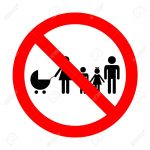A review of Forced Labor: What’s Wrong with Balancing Work and Family? By Brian Robertson.
Spence Publishing, 2002.
America, like Australia, is struggling with the related issues of women in the workforce, childcare, maternity leave, and family breakdown. The usual wisdom is to say that we just need to try harder to balance work commitments with family responsibilities. But Brian Robertson, a writer living in Washington DC, believes the answers lie elsewhere.
Indeed, from a historical perspective, the current crisis is really an anomaly. The modern feminist movement of the 60s taught that the only good woman is a career woman, and that homemaking and motherhood were to be despised and fled from. But interestingly, the women’s movement prior to that fought for the right of a mother to stay at home with her young children, and not be conscripted into the paid workplace.
Thus the struggle for those in the earlier years of the women’s movement was to protect women from the encroachment of market forces, and to prevent them from being forced into career at the expense of their families. Motherhood and homemaking, in other words, were seen as honorable and valuable ends in themselves.
But with the late 60s and onwards, the new wave of feminists took a totally different line: only in the paid workforce can a woman find meaning, freedom and dignity. Thus the vitriolic attack on mothers and the family. Betty Friedan therefore could call the home a “comfortable concentration camp” while Cosmopolitan editor Helen Gurley Brown could label a mother and housewife as “a parasite, a dependent, a scrounger, a sponger … a bum”.
A woman’s freedom, said these feminists, meant that a woman should and could be independent both in the economic and the reproductive realms. Women just do not need men, and are better off without them. Establishing a career and gaining financial independence is the first goal of the modern woman. And millions of Western women bought this line of thought.
Of course now the inherent contradictions are coming all too clear. Women who were told that they could have it all are now finding that they have very little. They may have a good job, but they have no husband or boyfriend, no children and no family. And many today are deeply regretful of this fact.
But it is not just women who have suffered at the hands of feminist orthodoxy. Children have been the big losers. Millions of children today are being raised by strangers. Yet all the social science research shows that children desperately need their mums and dads. No day care system can ever compete with the love and attention of a mother and a father.
Yet as Robertson documents, while the social research on all this is quite clear, very few are willing to promote the findings, for fear of incurring the wrath of feminists and of making working mums feel guilty. So although the research is clear, that attachment is important for infants and mother-child bonding is crucial, millions of mothers are ignoring the evidence, and their maternal instincts, and are abandoning their children in droves.
The harmful effects of extended periods of time for young children in day care are well documented in this book. Even child care workers admit that they would not dare to leave their own children in day care. Yet many mothers have been so indoctrinated into believing that their needs and desires must come first, that they are offering their children second best.
And seeking to alleviate the problems by better day care, more workplace flexibility, or seeking to obtain an unobtainable balance between work and family just is not sufficient. And it is not just short-sighted governments offering these inadequate solutions. The corporate world in effect has bought the feminist myth as well that women can have it all. But the truth is, they can’t have it all, at least not at the same time. Thus more corporate day care centres will not solve the bigger problems.
Indeed, the corporations are shooting themselves in the foot here. The really productive worker is the worker who has a happy and satisfying home life. But the corporate world, even with generous paid maternity leave policies, cannot stop the hemorrhaging of the family. Maternal deprivation is harmful to children, and unhappy children make for unhappy families, and unhappy families result in poor workers.
Governments also lose, as they seek to press women into the paid workplace, and do not deal with the root causes as to why so many families are forced to have two incomes. By bribing mums into the paid work place, whether by child care subsidies or other financial incentives, the growing problem of falling fertility rates, for example, will only increase. Less people mean less taxable income, and the inability to pay for expensive social welfare programs.
Thus both governments and businesses need to radically rethink what family-friendly workplaces actually mean. Robertson concludes by proposing some radical measures to put the interests of families first. These are predicated on the principle that human societies need the traditional family structure with a mother as the principal caregiver. Marriage and family are non-negotiable first principles. If that is accepted, then the following steps can be explored:
-Treat families as a unit in the tax code
-End “no-fault” divorce
-Replace the current welfare system with one that does not encourage illegitimacy and undermine intact families
-Pare back affirmative action legislation and programs
-Give all parents, not just those in the paid work place, child care credits or tax breaks.
These and other proposals, will help to ensure that real family-friendly policies are pursued. Yet Robertson knows that legal and economic change alone is not enough. The much harder cultural element needs to be addressed. But we have to start somewhere. And this volume is a good beginning point.
[961 words]



















